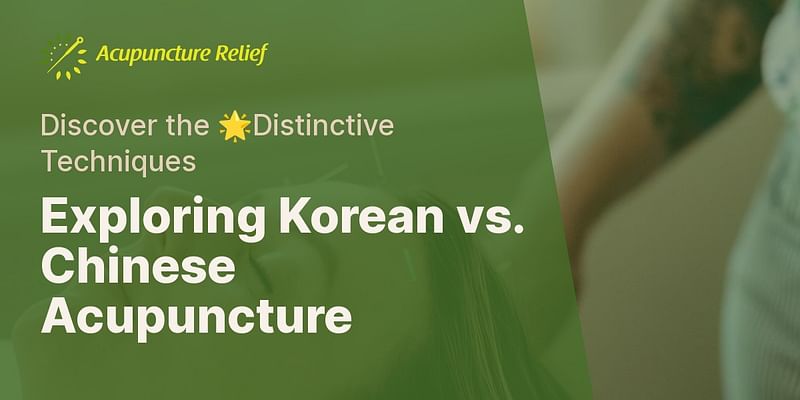Brooke Collier, Ph.D., is a certified acupuncturist boasting over 15 years of experience in the industry. She obtained her Doctorate in Acupuncture and Oriental Medicine from the Pacific College of Oriental Medicine. Specializing in pain management and women's health, Brooke is dedicated to informing the public about the numerous advantages of acupuncture and holistic health practices.
Acupuncture is a time-honored healing practice that originated in ancient China and has been used for thousands of years to promote health and well-being. Over time, different styles and techniques of acupuncture have developed, including Korean acupuncture and traditional Chinese acupuncture. While both styles share the same fundamental principles, there are some distinct differences between them.
Korean Acupuncture:
Korean acupuncture, also known as Saam acupuncture, is a unique style of acupuncture that has its roots in traditional Korean medicine. It was developed by Korean scholars who studied Chinese medicine and adapted it to suit the Korean culture and medical philosophy.
One of the key differences in Korean acupuncture is the use of fewer acupuncture points compared to traditional Chinese acupuncture. Korean acupuncture focuses on a select number of points that are believed to have a powerful effect on the body's energy flow. These points are carefully chosen based on the individual's specific condition and symptoms.
Another notable difference is the use of hand acupuncture in Korean acupuncture. Hand acupuncture involves stimulating specific points on the hand to treat various health issues. This technique is particularly effective for pain relief and is often used in conjunction with body acupuncture.
Traditional Chinese Acupuncture:
Traditional Chinese acupuncture is the most widely practiced style of acupuncture and is based on the principles of traditional Chinese medicine (TCM). TCM views the body as a complex system of interconnected energy pathways, or meridians, through which vital energy, known as Qi, flows.
In traditional Chinese acupuncture, a larger number of acupuncture points are used, with over 350 points identified along the body's meridians. These points are stimulated using thin needles to restore the balance of Qi and promote healing.
Traditional Chinese acupuncture also places great emphasis on the practitioner's diagnosis and understanding of the individual's overall health and constitution. The treatment approach is holistic, taking into account not only the specific symptoms but also the underlying imbalances in the body.
Benefits of Korean and Chinese Acupuncture:
Both Korean acupuncture and traditional Chinese acupuncture offer a wide range of benefits. They can be used to address various health conditions, including pain management, stress reduction, digestive issues, fertility support, and many more.
Korean acupuncture's focus on a select number of points allows for a more targeted and efficient treatment approach. It is particularly effective for acute conditions and pain relief.
Traditional Chinese acupuncture's comprehensive approach addresses the root causes of imbalances in the body, promoting overall health and well-being. It is often used for chronic conditions and as a preventive measure to maintain optimal health.
In conclusion, while Korean acupuncture and traditional Chinese acupuncture share the same underlying principles, they differ in terms of the number of acupuncture points used and the specific techniques employed. Both styles have their unique strengths and can be highly effective in promoting health and healing. The choice between the two ultimately depends on the individual's specific needs and preferences. It is recommended to consult with a qualified acupuncturist who can assess your condition and provide personalized treatment based on the most appropriate style for you.















